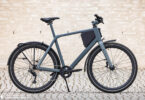Volvo’s new entry-level model, the EX30, promises to hit the mark like Thor’s Hammer. We travelled to Hamburg to test the Volvo EX30 in the city’s typical wet weather, navigating the urban jungle, and running errands. Who is it for? Who better steer clear? And can the compact eSUV juggle its premium aspirations with affordability?

Premium – this adjective is a firm favourite amongst car marketing departments when it comes to setting themselves apart from the competition. Volvo also consider themselves to be a premium brand. But what does “premium” even mean to the car industry? For the most part, that it’s “expensive”. And that you typically ignore the small and compact categories. The Swedish brand want to change all that with the new Volvo EX30 compact SUV, introducing the smallest and by far the most affordable model in their range. To Volvo, the new EX30 is what the Macan is to Porsche: an affordable entry into the world of premium automobiles. But do you get the full Volvo experience with prices starting from € 36,590? What compromises have been made? What can and can’t you expect? And can the Swedish safety pioneers deliver on their promise?
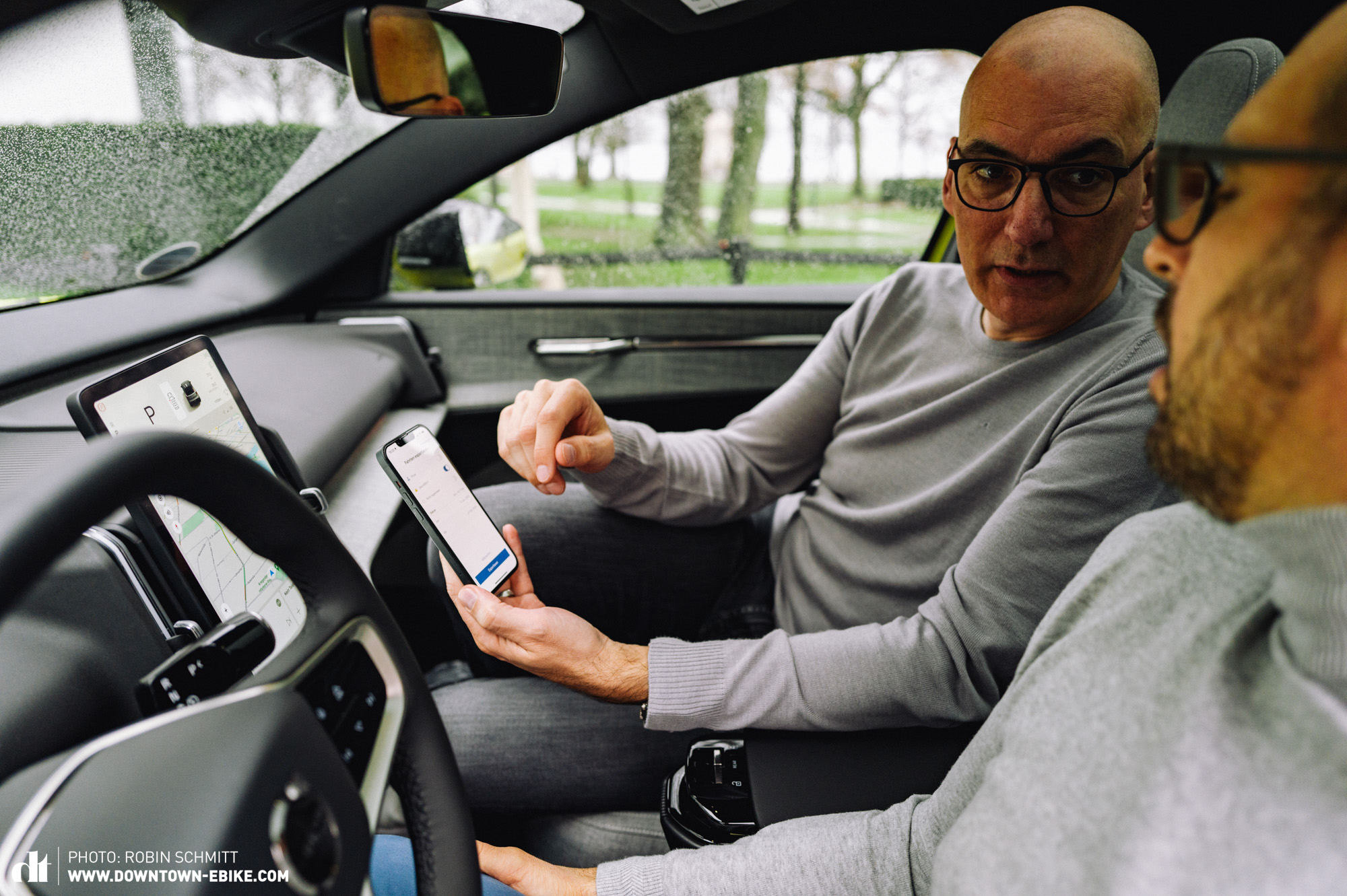


Compact SUVs – Is the Volvo EX30 unrivalled in its appeal?
Volvo is on the attack – and is targeting a clientele you wouldn’t necessarily associate with the brand. According to Volvo, the EX30 is particularly popular amongst successful first-time buyers with a sense of design and aesthetics, as well as EV upgraders looking for a premium vehicle. The EX30 should also be an attractive option for anyone looking for a compact second car.

The starting price of the Volvo EX30 is lower than that of the Opel Mokka Electric (from € 40,800), Hyundai KONA Electric (from € 41,990) and MINI Countryman E (from € 43,500). Even the VW ID.3 is more expensive (from € 39,995). Volvo themselves hardly see any competition in this segment, believing that the Smart #1, which we recently tested and is based on the same platform, is their closest competitor.
The Smart is actually very similar to the EX30 in terms of both price (from € 42,490 with a 66 kWh battery) and size, though it is slightly taller and longer, resulting in a correspondingly higher consumption.
The BYD Atto 3 is another viable alternative. Although slightly longer and not designed as an SUV, our test of the flagship BYD HAN has already proven that the premium claim is no longer unique to European car brands.
But to what extent can we even distinguish between Europe and China in today’s global market? Volvo are based in Gothenburg, Sweden, but are owned by the Chinese Geely Group, who also hold shares in Smart. Volvo skirt this fact very elegantly on the license plate holder: Made by Sweden.
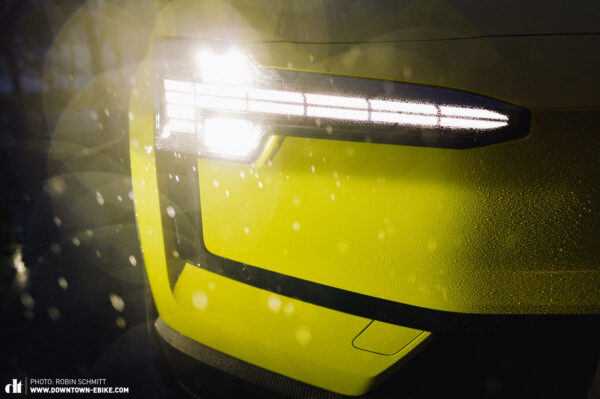

Clearly, no one at Volvo doubts that their smallest car since the C30 from the 1980’s will be a hit. At the press event in Hamburg, it was regularly emphasised that the new Volvo EX30 is guaranteed to become the best-selling Volvo model of 2024, and contribute to the further electrification of their fleet. So far, BEVs make up 16%, and PHEVs make up 22% of all Volvo cars. 2023 already proved to be a record-breaking year for the Swedish brand with a global turnover of € 35.5 billion, but they want to increase it to € 55–60 billion by 2026 – which is extremely ambitious.
As part of this, Volvo plan to further increase the recycling quota of their fleet, using at least 30% recycled plastics across the entire fleet, and 35% for new vehicles by 2030. On the new EX30, the recycling aspect is put to show in certain places: the lower sections of the bumpers are partly made of recycled plastic and they’re unpainted for easier recycling. According to the manufacturer, the floor mats consist entirely of recycled PET bottles, and the dashboard is made of 30% recycled material. The covers and decorative elements are also made of recycled materials from discarded PVC window frames and roller shutters. In our test vehicle, the decorative panel on the dashboard is made of flax fibres, which provide a modern look and a grippy texture. As with all sustainability claims, however, the actual environmental footprint is usually very complex.
Volvo EX30: Price, leasing, and specs – from affordable to high-end
€ 36,590 – this is the starting price of an entry into the premium segment with Volvo’s new EX30. That’s almost € 11,000 less than the electric versions of the current XC40/C40. However, this only applies to the entry-level model. Volvo offer 3 motors, 2 battery options, and 3 trim levels – plus a few costly extras. The basic Volvo EX30 has a single 200 kW (272 hp), rear-wheel drive motor, and a usable battery capacity of 49 kWh, which is said to be good for a WLTP range of 344 km. It forms a good starting point, though it’s fairly stripped back. In our opinion, the most sensible combination consists of the single motor with the larger 64 kWh battery, providing a nominal WLTP range of 476 km. Compared to the base model, it will set you back by € 41,790, which we think is fair. Topping this is the Twin Motor AWD Performance. The name says it all as it comes with two motors, capable of churning out 315 kW (428 hp), and all-wheel drive. The price point here is at least € 48,480.
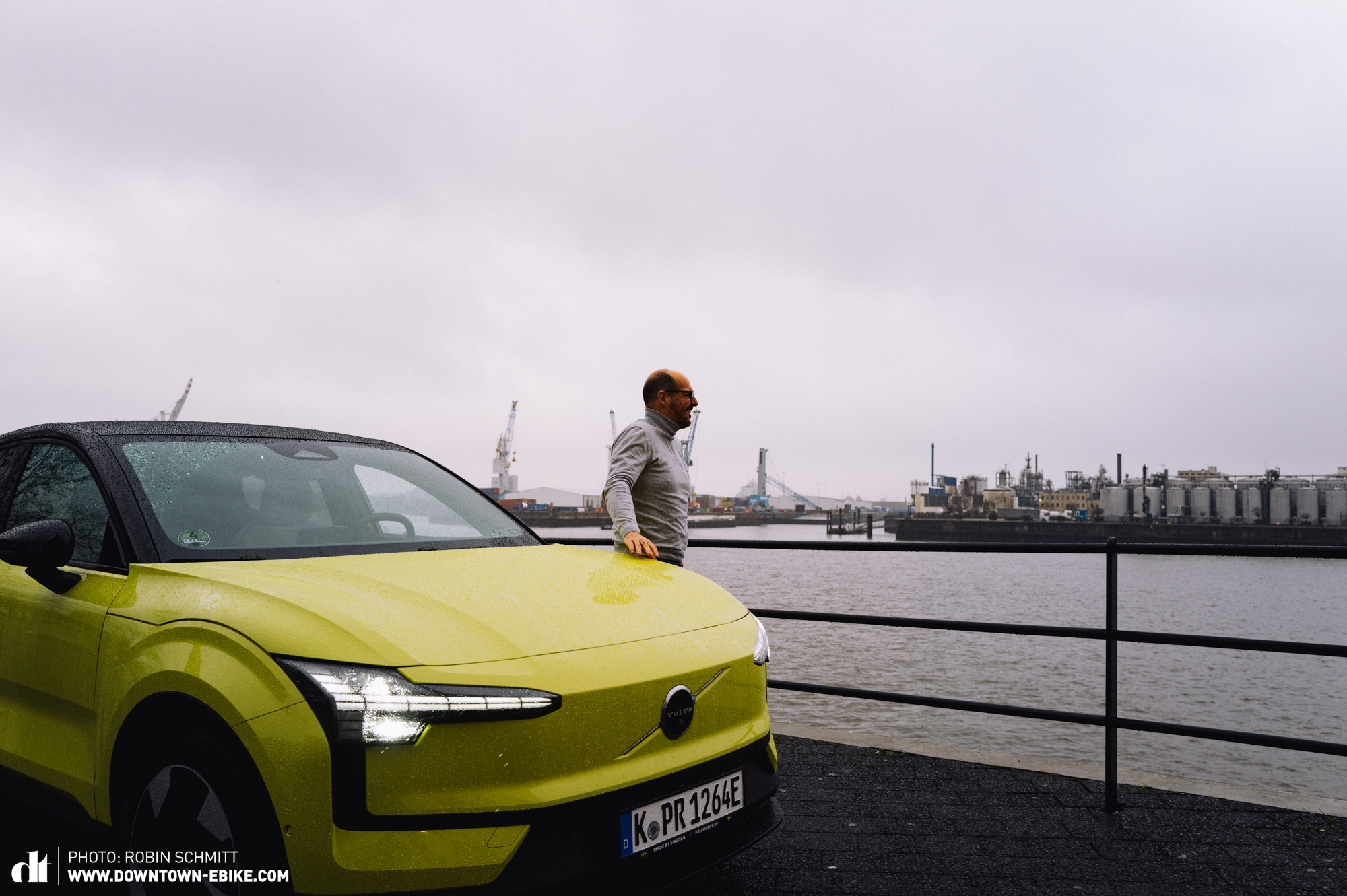
With the new Volvo EX30 on test, the Swedes reached for the high shelf, providing us with the twin motor and the most expensive Ultra trim. Our test car also features the Moss Yellow finish (€ 650), heated steering wheel and seats (€ 400), and the subtle, light grey Misty interior (€ 1,250). In total, that makes € 54,390. Doesn’t sound that affordable anymore. However, Volvo also offer leasing and financing models through their dealers. Alternatively, the “Care by Volvo” subscription includes everything except the electricity at a monthly rate. Packages start at € 599 for a 36-month term, and go up to € 799 for short terms of just 3 months. Volvo provide a 3-year warranty on the vehicle, and 8 years or 160,000 km on the battery.
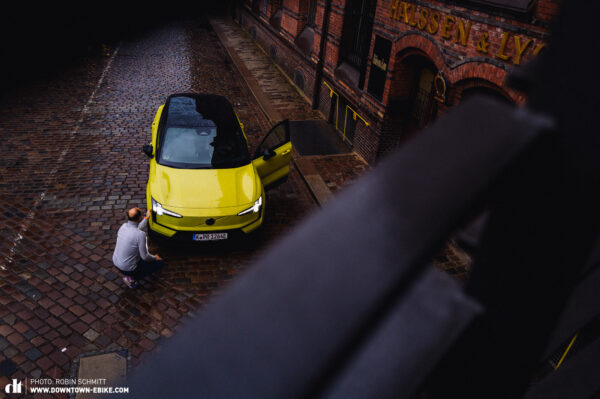

The most affordable Volvo EX30 Core trim has everything you need, like automatic climate control, rear park assist, central display, and a sound system. The design of the LED headlights was inspired by Thor’s Hammer, boasting high beam assist, integrated LED daytime running lights, and a welcome sequence. For those who need a tow hitch, you can have that fitted too. The tire size starts at 18″, whereas the two more expensive trim levels come with 19″ models.
The mid-level Plus trim comes with a premium Harman-Kardon sound system with 8 instead of 4 speakers, and a subwoofer. In addition, the exterior mirrors and roof are painted high-gloss black instead of being colour-matched. Additional amenities include 2-zone automatic climate control, 2 USB-C ports in the rear, electric hatch, lane change assistant, and park assist up front, as well as an inductive smartphone charging station.
With the Ultra package, you can enjoy a 22 kW AC charger (usually 11 kW), which is rare and can offer significant advantages in urban areas. The seats are electrically adjustable, and you’ve got a 360° camera. The frameless mirrors look great, but they also get wet and dirty very quickly, unfortunately. The panoramic sunroof is a highlight, offering a much more airy and spacious feeling and, unlike in the KIA EV6, it doesn’t affect the headroom in the driver’s seat. We would like to have the panoramic sunroof as an option on all models of the Volvo EX30.

The design of the new Volvo EX30 – Modern, clean, but unmistakably Volvo
There’s no mistaking the new EX30 for anything but a Volvo, from the outside or the inside. The headlights and rectilinear tail lights contribute to this. They are meant to be reminiscent of early Swedish models, when designers still used a ruler to connect two points.
Volvo have struck a good balance between a clean aesthetic and understated playfulness with their compact eSUV. The EX30 is adorned with elongated contours as well as round “eyebrows” above the wheel arches. However, the off-set transitions from the bonnet to the A-pillar, and the rear door to the C-pillar make the side view look unnecessarily restless. Intentional? Perhaps.
We prefer the view of the rear end, which makes the small SUV look a little wider. The EX30 looks very compact from all other angles, which is unexpected for a Volvo. The 19″ tires of our test car look relatively big in comparison. However, the two-tone rims create a sporty look. Incidentally, this doesn’t apply to the key, which looks like a glossy black matchbox without any buttons. Surely they could have come up with something more elegant, especially since you always carry it with you and it should be part of the premium experience. We had the same issue with the Polestar 2, which fails to live up to its premium image and brand claims in other aspects, too.
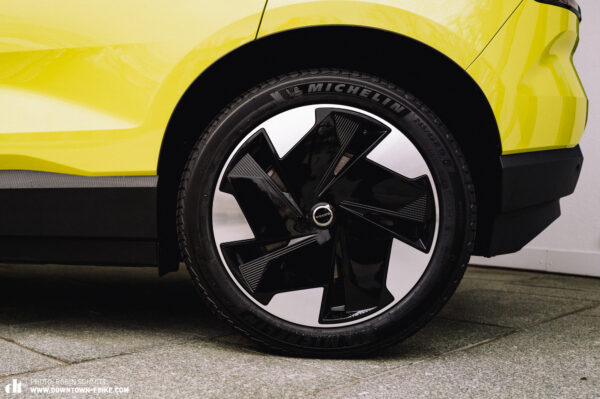

You can choose from five different colours, of which only Vapour Grey doesn’t come with a surcharge. The remaining colour options cost an additional € 650. Fortunately, the names of the colours are relatively self-explanatory: Moss Yellow, Cloud Blue, Crystal White Pearl, and Onyx Black Metallic. However, not all colours can be combined with every interior design.

The interior design is typically Scandinavian: minimalist and stylish. The minimalism and panoramic sunroof create an airy and spacious feeling. However, the door handles and the tabs for adjusting the ventilation ports add a little playfulness to the interior.
The workmanship is top notch both inside and out. The choice of materials for the interior also makes a high-quality impression. They’ve resorted to using recycled materials below the field of view, which Volvo don’t even try to conceal, and we find this is a great move on their part. And it doesn’t look any cheaper compared to other premium cars.
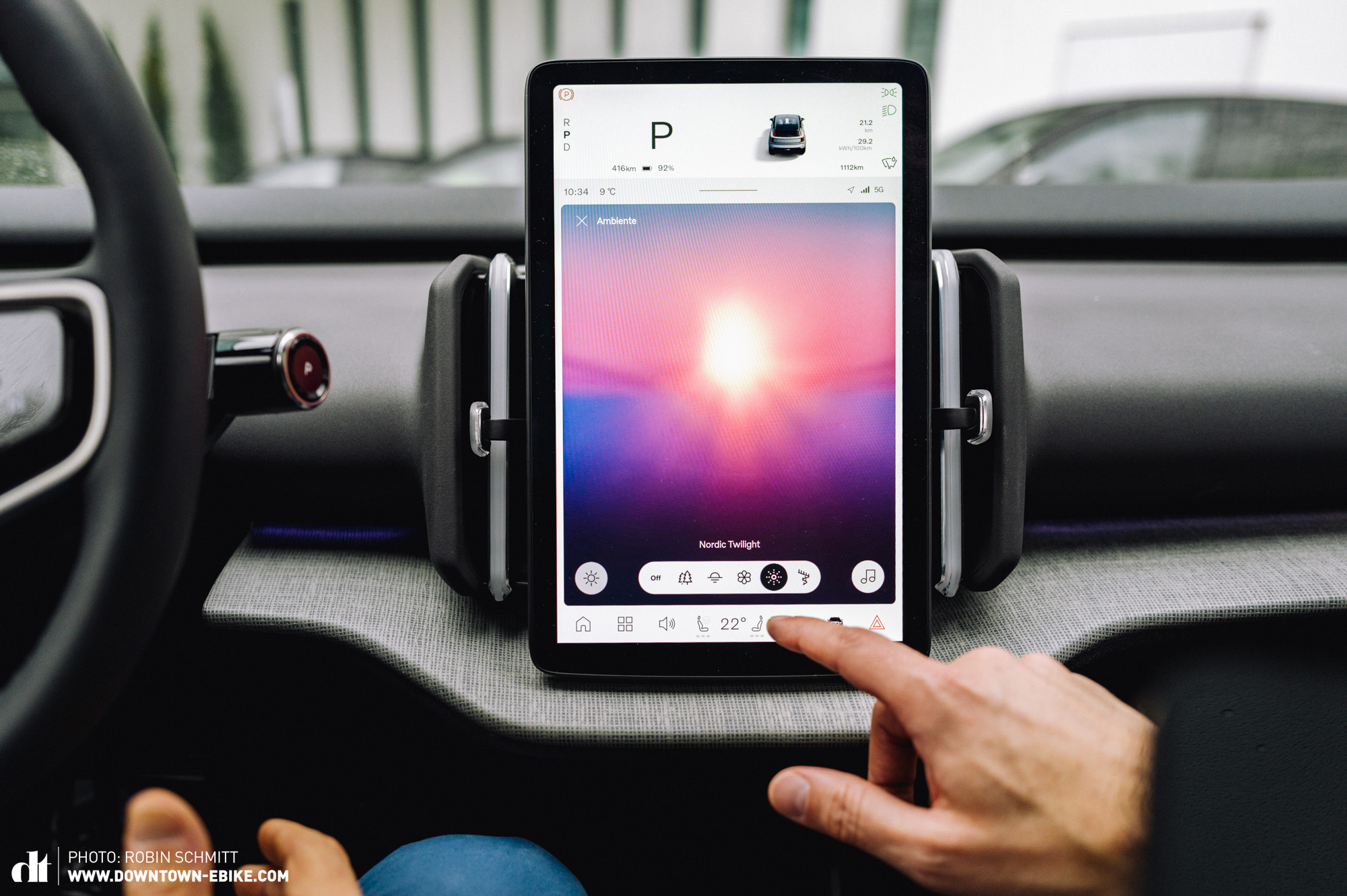
The doors don’t have window openers – these are in the centre armrest for cost reasons. You won’t find speakers in the doors, either. They were sacrificed in favour of larger door pockets, and have been moved to a soundbar in front of the windscreen. A good idea, regardless of whether it brings down production costs ;-). We’ll tell you whether the sound does justice to the Harman-Kardon logo further down below.
There is no shortage of storage space: a compartment extends forward from the centre armrest, which also contains two cup holders. There is another compartment on the vehicle floor, the rear part of which can even be removed from the rear seat. The glove compartment under the central display is somewhat unusual, too, which is easy to reach from both front seats – great – but can only be opened via the display – not so great. We fail to see the reason for this.
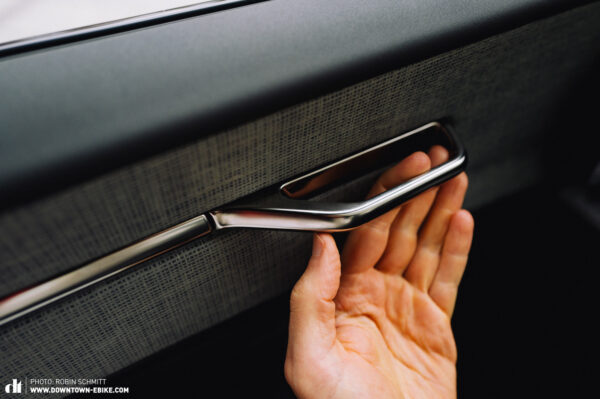
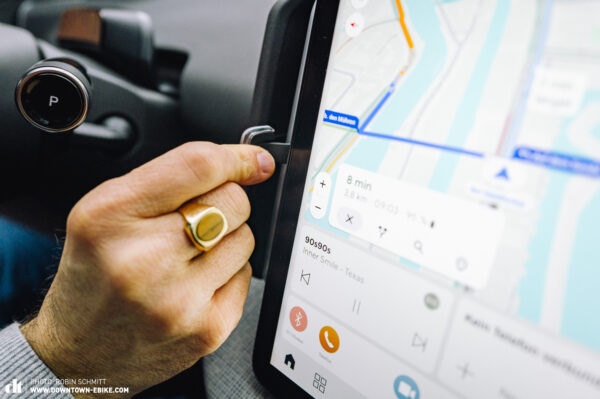
The little hammer could be a big hit for Volvo. But it’s only the base model of the EX30 that’s genuinely affordable, and by base they really mean base.
Navigation and infotainment in the Volvo EX30 – Google OS and Google navigation
No, the new Volvo EX30 isn’t a smartphone, yet Google plays a central role in the compact SUV. The infotainment system, which is controlled via a central 12.3″ display, is based on an Android OS. Because there is no display behind the steering wheel, you must keep looking to the right… and you’ll soon get reprimanded for doing so by the overzealous attention warning feature. That’s annoying.
The navigation function is just Google Maps. You can even access the Google Play Store, where you’ll find countless apps.
In principle, the user interface is quite intuitive, though the numerous submenus require a certain amount of time to get used to. In return, you get a wealth of settings, vehicle information, and consumption stats.
Unfortunately, when a car approaches the EX30 from behind – like at a traffic light – a message with a distance indicator appears on the display, and obscures a part of the navigation, which happened to us several times. The message only disappears after you pull away – you can’t click or swipe it away manually. Annoying and superfluous.
The onboard system is complemented by a helpful app with charge stop planning, pre-climate conditioning, and a very helpful logbook function. This relieves you of a lot of work when you must separate business from private trips and create a logbook for tax purposes, for example – or for speeding fines ;). The latter will perhaps be less common in the future, because, as with any new car, the new Volvo EX30 will sound an alarm as soon as you exceed the speed limit – even if it’s just 1 km/h too fast. You can thank the EU for that. Fortunately, both this and the attention warning function can be deactivated. It’s best to assign the deactivation to the freely configurable button on the steering wheel because you’ll have to deactivate the alarms every time you switch on the vehicle.

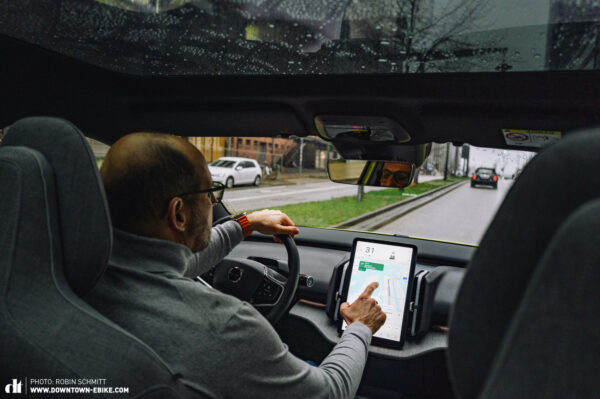
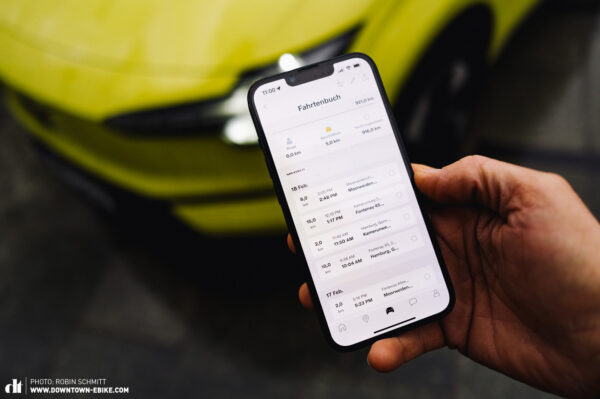
The Google Maps navigation automatically integrates charging stops into the route, but also lets you search directly for charging stations in the area. Along with the search results, you get information about the charging capacity and the status of the individual charging points. At least in theory – the navigation brought us to a 350 kW charging point that was out of service. Fortunately, thanks to the large battery, we still had more than enough range left.
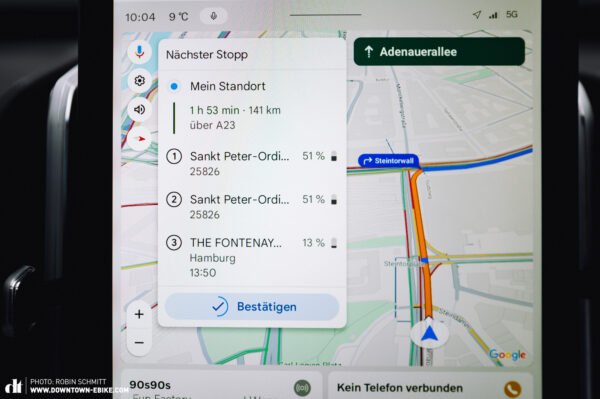
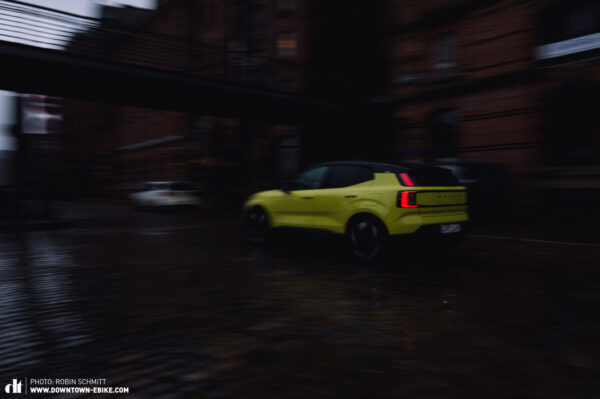
Volvo EX30 driving assistants – Can the Swedish safety pioneer deliver?
The driver assist functions give some cause for criticism, although our test car had everything that you would expect from a modern car. Controlling the various functions via the large and smooth steering wheel buttons doesn’t always work reliably. They don’t provide any feedback when you push them, and they can’t be operated blindly. Furthermore, why have a black high-gloss finish on the buttons of a multi-function steering wheel? If there’s any place you’ll have fingerprints…
The operating logic of the cruise control can be somewhat puzzling. The cruise control doesn’t always accept the speed settings immediately, and it also changes the speed by 5 km/h with every single press. You must long-press to adjust the speed more finely… This may seem very unusual.
In theory, the adaptive cruise control should also take the detected speed signs into account. That didn’t happen during our test drive, and the traffic sign recognition didn’t always work reliably, either. On the other hand, the cruise control works very sensitively, speeding up and slowing down very pleasantly and reliably.
Unfortunately, the steering assist doesn’t work too well. Although it handles gentle curves perfectly, even through tight construction sites, it suddenly stops assisting through sharp turns and will just drive straight ahead. When that happens, the Volvo EX30 doesn’t emit more than an inconspicuous warning tone. Roadway constrictions and trucks also easily worry the steering assist. We expect more, especially from safety pioneers Volvo.
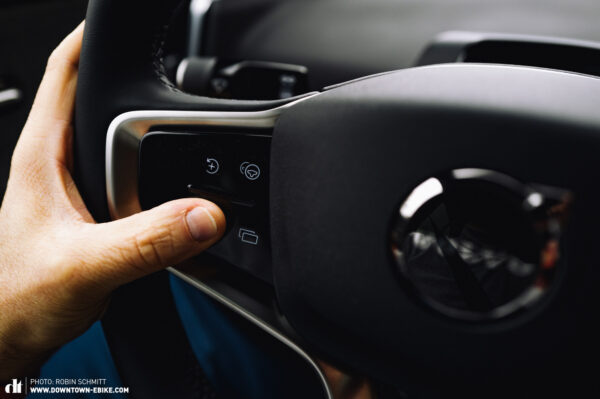
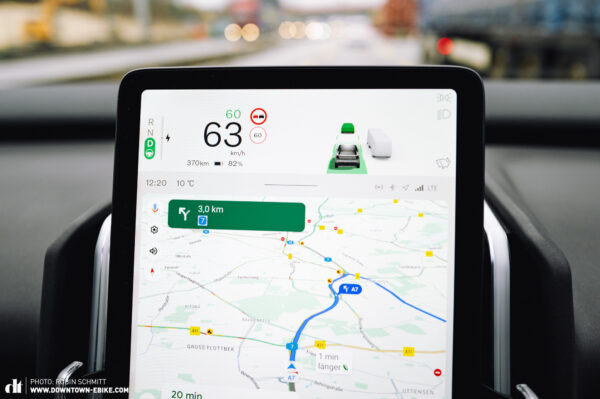
What is the Harman-Kardon soundbar in the Volvo EX30 capable of?
The central soundbar in the dashboard is definitely an eye-catcher and has something unique about it. You’ll usually find soundbars in the home cinema sector with the manufacturers promising an immersive, spatial sound. That usually doesn’t hold true in home cinemas. It’s no different in the EX30. Anyone expecting acoustic fireworks will surely be disappointed. This simply cannot be achieved without dedicated speakers. Regardless of beamforming and virtual whatever.
The soundbar in the Volvo EX30 delivers a clear, well-separated stereo sound with an audible stage. The subwoofer provides the necessary base. Nevertheless, the sound system is better suited to laid back music than hardcore beats, so fans of the trendy music of today’s youth are less likely to get their money’s worth.
The sound control is very poor – you can change the sound balance between the driver’s seat and the front passenger’s seat, but that’s about it. So, parents can’t let their children listen to music in the rear, while they converse largely undisturbed in the front. Incidentally, the soundbar also emits the system and warning tones. The turn signal sounds even come from the left or right but sound very synthetic.
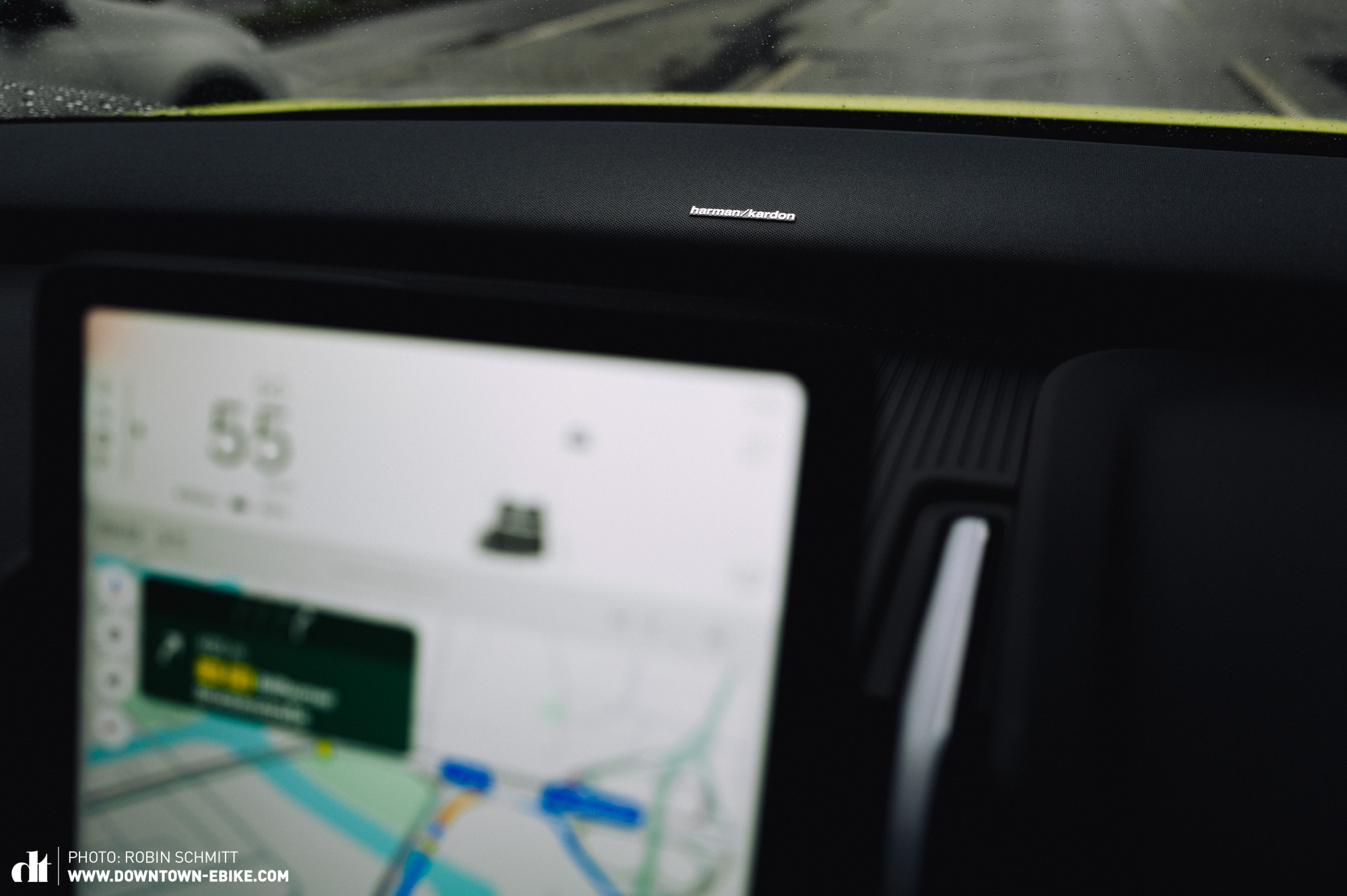
Dimensions and interior space in the Volvo EX30 – Length, width, trunk capacity, payload and turning circle
When you get in the EX30, you’ll be met with an airy and spacious feeling. It feels bigger inside than you would expect from the outside. The seats are also much more comfortable than they look at first glance. Volvo have managed to combine the minimalistic design with a high level of comfort. Firmly padded and pleasantly shaped, the seats also fit larger people very well. Tall people will be pleased with the ample headroom, and the wide adjustment range of the seats. That said, the headrests cannot be adjusted. Thanks to their cushion-like overlay, they are very comfortable, nonetheless.
Things are much tighter on the rear bench, especially when you’ve got someone tall sitting in front of you. The vehicle floor is relatively high too – the battery must go somewhere, after all – which limits leg room for the rear passengers. At least there is enough room for you to tuck your feet under the front seats, and there is plenty of space towards the top and back.
The rear window controls are placed in the rear centre armrest, like in the front. However, there are no dedicated rear window controls in the front of the EX30, and the rear window switches are out of reach, so you can’t open all the windows from the driver’s seat.
The wide C-pillar is also problematic and significantly restricts all-round visibility. You must use the cameras to park if you don’t want to risk a curb check.

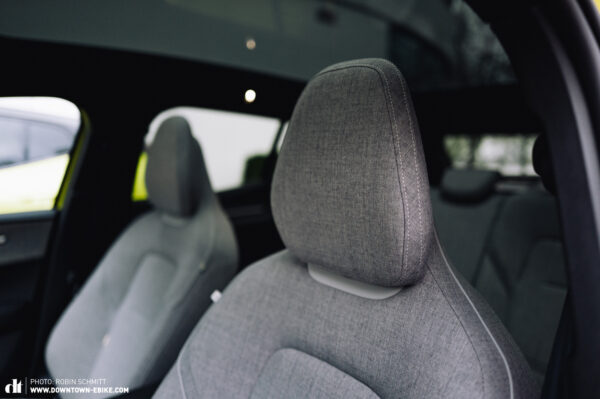

The compact exterior dimensions of 4.23 by 1.84 metres (excluding mirrors) are only noticeable on the rear bench. But what about luggage capacity? The small 7 litre frunk isn’t even deserving of this name, especially because it is only accessible via the mechanical bonnet release in the footwell, and is not even big enough for the (dirty) type 2 charging cable. The rear trunk is significantly bigger. While 318–904 litres aren’t record-breaking, the space can be used very effectively thanks to the large hatch and high roof. On top of that, you can adjust the height of the floor. And what doesn’t fit in the trunk can be mounted to the optional tow hitch – like a couple of eMTBs. Depending on the powertrain, the small Volvo can tow up to 1,700 kg.
Volvo EX30 – Range, charging, and realistic consumption
Volvo’s smallest family member comes with a choice of two battery sizes with different Li-ion cell chemistries. The smaller battery is an LFP (lithium-iron-phosphate) battery with a gross capacity of 51 kWh, which contains no rare earth elements or heavy metals. The larger 69 kWh battery is based on NMC cells (nickel-manganese-cobalt), which have a higher energy density than LFP cells and a higher C-rate, i.e. they can deliver more power at the same capacity without getting damaged.
The battery size and cell chemistry also influence charging speed: the battery in the single-motor Volvo EX30 can charge at up to 134 kW on the DC fast charger. The larger battery, on the other hand, can be charged at up to 153 kW. Not a big difference, and both are respectable values.
Ultimately, what really matters is the charging curve, as well as battery pre-conditioning – especially in icy winter conditions. During our first test drive we found out that the battery pre-conditioning activates automatically when navigating to a charging station. However, we cannot yet make a reliable statement about the DC charging speed. For that, we would have to complete several charging cycles with different states of charge.
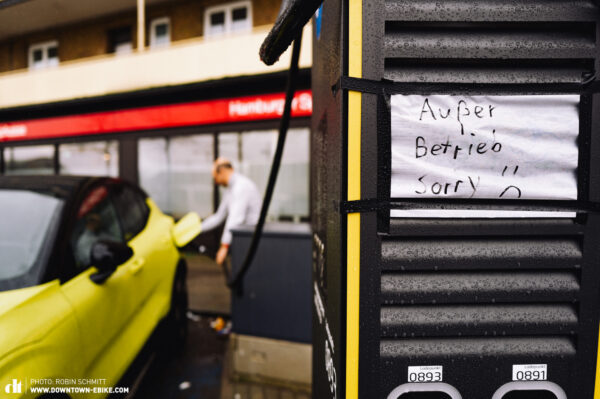
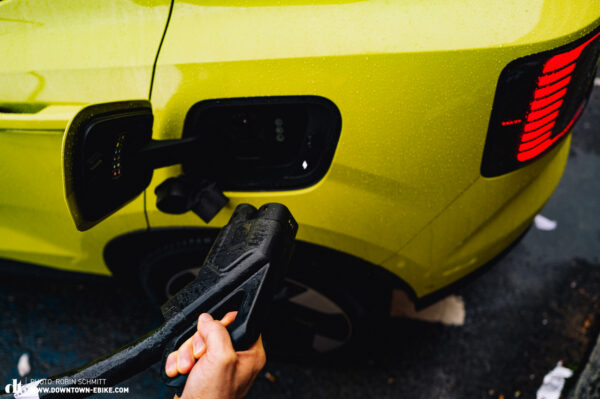
However, we can say something about the Volvo’s realistic consumption. Our twin-motor, all-wheel drive test car promises a WLTP range of just under 450 km, which corresponds to a consumption of about 17 kWh/100 km. During our test drive in and around the wet and cold Hamburg, we ended up with an average consumption of around 20 kWh/100 km. However, we must note that we floored the accelerator pedal several times and also made several longer stops with the heater running. So, under realistic conditions, the battery should be good for 350 km, with ease. You could even get a range of over 400 km in the summer, with a moderate driving style, making it very suitable for long distances. It’s more than enough for the city!
The twin-motor models benefit from an integrated heat pump, especially in winter. In urban use, however, the smaller battery will also do the trick. It’s a pity that it’s only available with the single motor.
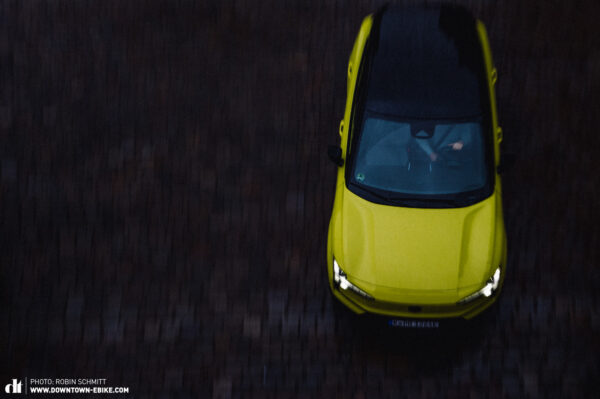
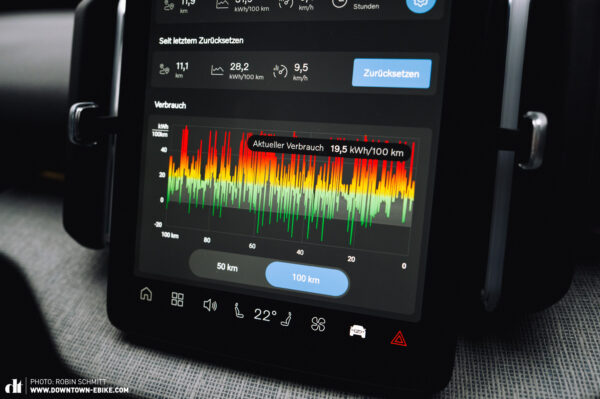
If you have access to a 22 kW AC charging station or wallbox, the Ultra trim level comes with a 22 kW onboard charger, which is a very rare feature. It’s a truly unique selling point that halves charging time in the city and at home. That’s premium.
Driving the Volvo EX30 – When the e-power meets the road
Foot on the brakes, select the gear, pull away – that’s e-mobility done right. We’ve driven EVs where you must first push a completely superfluous button to start the system up, in order to then “delight” in an at least equally as superfluous welcome jingle, taking what feels like an eternity to get going. It’s like those ancient times when people had to preheat their diesel engines.
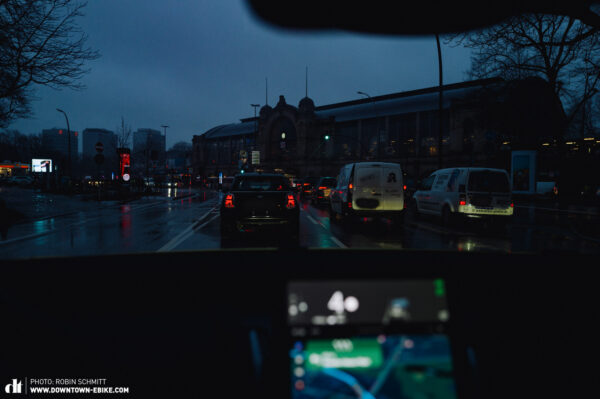
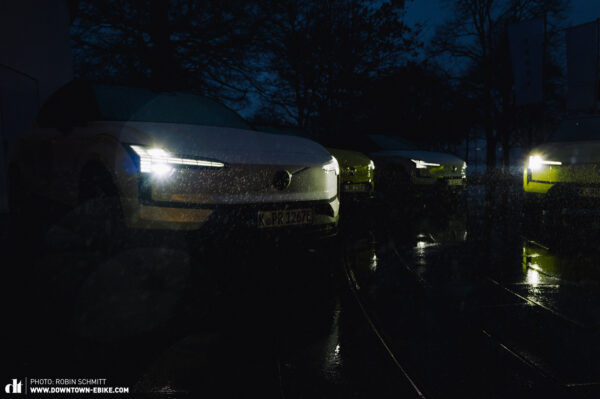

We jet off in Hamburg’s rush hour traffic and typically inclement weather. Here, too, the new Volvo EX30 proves to be conspicuously inconspicuous.
At first, all you hear is a quiet EV hum, and the compact SUV also remains pleasantly quiet at higher speeds. There’s hardly any wind noise, no creaking or groaning, just peacefully gliding along. The rolling noise of the 19-inch wheels only gets a little more obtrusive on cobblestones, which is no surprise.
What is surprising is the acceleration. 315 kW feels like 428 hp in the Volvo EX30 ;-). The small SUV accelerates furiously (clocking 0–100 km/h in just 3.6 s, according to the manufacturer), and it does so with confidence thanks to all-wheel drive. If you overdo it, you’ll even be rewarded with a gentle rear-wheel drift before it’s safely reigned in by the ESC, though this can be switched off.

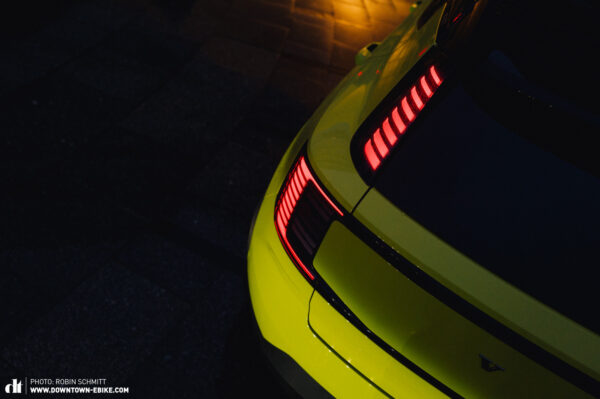

The rather soft steering doesn’t quite match the Volvo’s dynamic acceleration and sheer performance, especially since it still feels somewhat vague even in the sportiest setting. The firm suspension is noticeably sportier, while still remaining comfortable. The EX30 only bounces slightly when hitting bumps in quick succession.
Overall, the compact SUV makes a confident driving impression, offering plenty of power combined with sufficient comfort. Premium indeed!



Who is the 2024 Volvo EX30 for – And who better steer clear?
According to Volvo, the EX30 is the perfect EV for first-time buyers with premium standards, and for those upgrading to an EV. Or the XC90 owner looking for a compact second car. And of course, these target groups certainly exist. But that doesn’t do justice to the Swedish brand’s smallest eSUV.
Urban commuters who travel short distances of up to 40 km a day should get away with charging once a week, without inducing range anxiety – at least with the large battery option.
Seasoned EV drivers who have long since overcome range anxiety will also be served well by the Volvo EX30 on long journeys, and it will suit small families with high demands, too. Especially thanks to the large, easily accessible trunk and tow-hitch compatibility.
Of course, the price of the entry-level version sounds tempting, but considering the smaller tires, smaller battery, and lack of features like a 360° camera, heat pump, and sunroof, it’s noticeably less premium.
The small battery isn’t necessarily a negative. On the contrary, those who typically drive short distances of up to 100 km needn’t invest in a bigger battery.
High-mileage drivers, business people, and very active families will probably look elsewhere. They would want a longer range, more luggage capacity, and more interior space. But Volvo also cater to that target group.
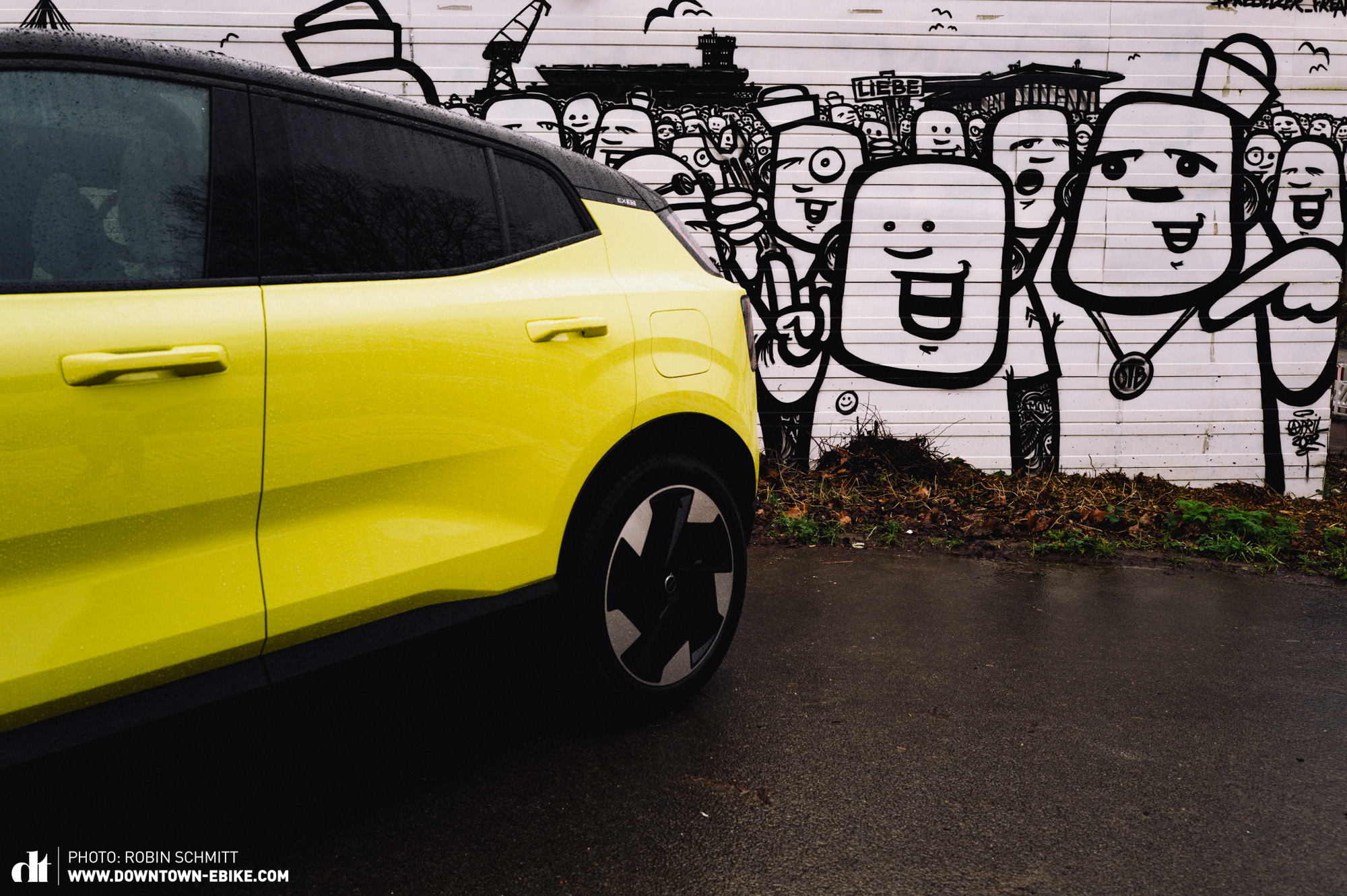
Our conclusion on the Volvo EX30
Maximum minimalism and maximum power: the Swedish brand’s smallest car has big plans. For over € 54,000, the twin-motor Volvo EX30 Ultra on test delivers an impressive performance, it’s spacious, and offers top-notch design and workmanship. The considerably more affordable base model is lacking in many premium features, and starting from € 36,000, the excellent panoramic sunroof isn’t even an option. Nevertheless, the entry-level version can be a fun and sensible option for commuters. However, if you want Thor’s (smallest) hammer in all its glory, you’ll have to dig a little deep into your pockets for the compact eSUV.
Tops
- minimalistic, elegant design language
- spacious feeling interior
- firm yet comfortable suspension
- quiet
- dynamic but controllable power delivery
Flops
- panoramic sunroof is exclusive to the flagship model
- unreliable steering assist/cruise control
- fiddly steering wheel buttons
- only the base model can be considered affordable, and it really is basic
- beautiful exterior mirrors are exposed to rain and dirt
For more information, visit volvocars.com

Words: Patrick Gruber Photos: Robin Schmitt





